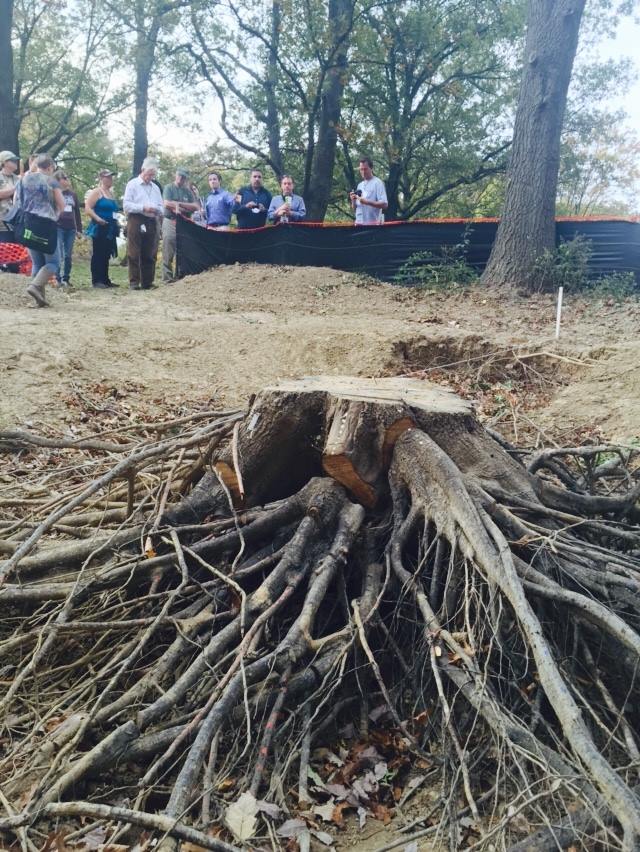Carbon Sequestration, how soil turns into top soil. I've shown you the foundation of our research into what the significant carbon based molecules of soil are and I've shown you how a ruined dispersed clay soil can be fix, healed, by inoculating it with a biomimetic soil ecology process developed by Soil Secrets that will capture carbon, change the color of the soil and change the structure of the soil, all in rapid sequence. In this post I'm showing you the roots of a young Shumard Red Oak that was cut down at the Morton Arboretum in Chicago. The wood found in tree roots is composed of cells that have cell walls made up of a sugar called Cellulose. Cellulose is a complex sugar made up of the same sugar that's found in our blood called Glucose, but in the case of Cellulose the Glucose is linked together to make a larger molecular substance that is structurally strong and able to be the structural backbone of wood. As you can see in these two images there's a lot of wood that has grown in the soil under this tree and the carbon making up the molecule of the cellulose will contribute to the soil building process as part of the soil carbon sequestration process.
Recently I was in an Albuquerque retail nursery where a fertilizer was being sold that stated it was formulated for alkaline soils of the Southwest. It contained high levels of iron and sulfur, plus the N, P and K major nutrients. Do any of the readers care to comment on this type of product? Pros, Cons, etc. I have my take on it, but I'll entertain what you want to say about it. Michael Martin Meléndrez


